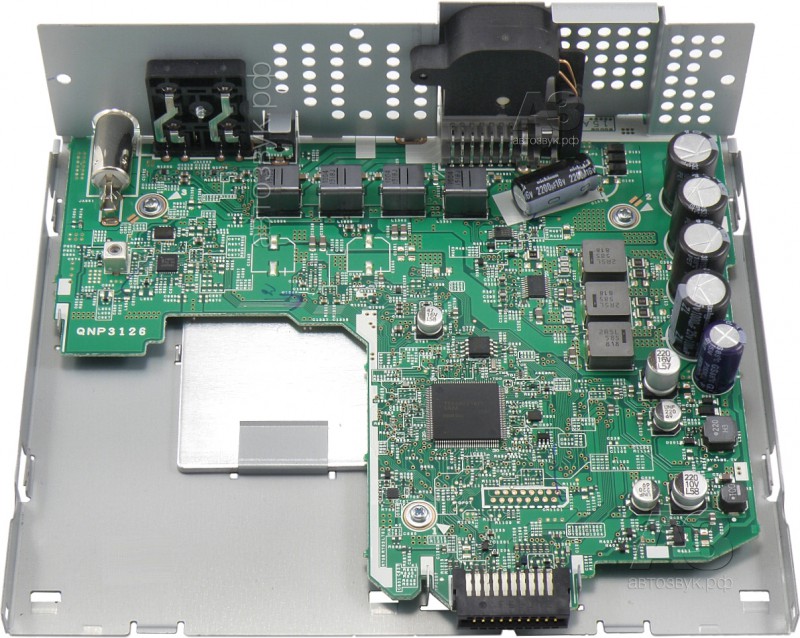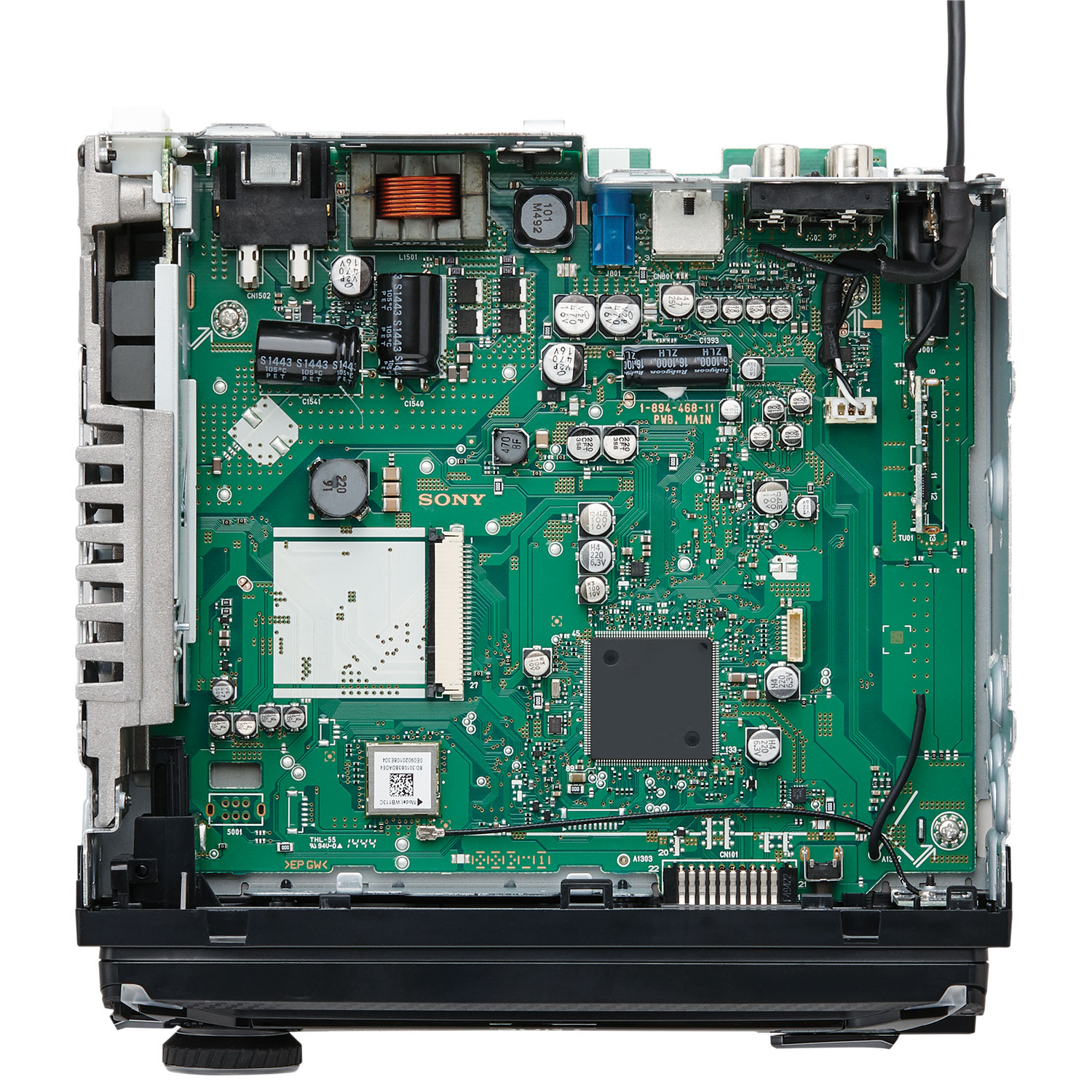Class-D Head Units?
#1
Hey, I have the Sony MEX-XB100BT which has a pretty high power envelope for a head unit. I was wondering what other companies offered comparable power output for a head unit using class-d solid state amplifier tech?
#2
That's a nice unit. I'm not a big fan of Class D amps, except in subwoofers. What kinda speakers you run in the doors?
Thanks!
Thanks!
#4
Does anybody know if these HU have a built-in DC-DC converter to step up the power supply voltage? I ask because these power numbers sound higher than the math allows.
When looking at amp specs, remember that "RMS power" does not necessarily mean "sine wave power". RMS is simply a means of measuring power for a non-DC signal; it doesn't always mean the signal is an audio (sine wave) signal.
When they quote "maximum RMS power" they are probably describing a situation where the amp is over-driven to the point where you get nothing but square waves on the output (100% distortion), which is in fact the maximum amount of power the amp can deliver. This is not usable power, as you would have turned the volume down long before you get to this level of distortion. But assuming this condition exists (square waves) and you're using a 14.4 volt power source with zero power losses in every part of the circuit, the most power you can put into a 4Ω load is 51.8 watts. With a sine wave signal the maximum power is half of that (25.9W). Of course, in the real world there are losses everywhere so you're likely to get 75-80% of that.
When looking at amp specs, remember that "RMS power" does not necessarily mean "sine wave power". RMS is simply a means of measuring power for a non-DC signal; it doesn't always mean the signal is an audio (sine wave) signal.
When they quote "maximum RMS power" they are probably describing a situation where the amp is over-driven to the point where you get nothing but square waves on the output (100% distortion), which is in fact the maximum amount of power the amp can deliver. This is not usable power, as you would have turned the volume down long before you get to this level of distortion. But assuming this condition exists (square waves) and you're using a 14.4 volt power source with zero power losses in every part of the circuit, the most power you can put into a 4Ω load is 51.8 watts. With a sine wave signal the maximum power is half of that (25.9W). Of course, in the real world there are losses everywhere so you're likely to get 75-80% of that.
#5
Pretty sure there is no DC-DC converter inside, they are only rated at 40W RMS which I guess would be possible with only 14.4V.
Here is a test on the Sony unit, wonder what's inside the black box (other than the fuse).
Here is a test on the Sony unit, wonder what's inside the black box (other than the fuse).
#6
I looked at the video and yes, the black box MUST contain a DC-DC converter, as it is simply not possible to get 40W into 4 ohms with 14.4 volts. Those guys have good test equipment (I just have a signal generator, meters, and scope) but I noticed they are using the term "RMS Power" like most people in the industry - as if it means "sine wave power". Both of Sony's ratings (100W max and 40W RMS) are RMS ratings. It would also be nice if they tested at more reasonable voltage levels (13.5 maybe) but then that might not sell as many head units. They could also tell us how efficient the amp is, which would have taken, oh, maybe another 10 seconds to measure.
On the good side I was pleased to note that they stated that most 50W x 4 amps only deliver about 18W a channel, which closely matches the measurements I've taken (max I have found is 17W). 18W is not bad as it's almost 70% of the theoretical max of 25.9W.
But I am really surprised they didn't test the subwoofer output option since that seems like something a lot of people would use. I'm also slightly confused by Crutchfield's claim of 60W sub power when the sub connects to only ONE of the rear speaker outputs (and why can't I use a dual-vc sub and use both channels?). There is no mention of this 60W power rating in the HU manual, though there are some interesting notes in the manual which I included below:
"When the amperage rating of the fuse used on your car is 10 A, make the power connection to the battery directly to avoid short circuits." - Not! I think somebody is confusing "blowing a fuse" with "creating a short circuit".
AND
"During full-power operation, a current of more than 15 A will run through the system. Therefore, make sure that the wires to be connected to the +12 V and GND terminals of this unit are at least 14-Gauge" - DUH! The fuse rating is always a clue as to the unit's actual power output. 100W max x 4 = 400W, which at 14.4v is 27.7 amps, assuming a 100% efficient amp. and almost 35A with an 80% efficiency (which is really, really good). How long do you think that 15A fuse will last? Blink and it's gone.
Even at the 40W x 4 rating (160W total), 80% efficiency means you're pulling about 14 amps through that 15A fuse.
.
On the good side I was pleased to note that they stated that most 50W x 4 amps only deliver about 18W a channel, which closely matches the measurements I've taken (max I have found is 17W). 18W is not bad as it's almost 70% of the theoretical max of 25.9W.
But I am really surprised they didn't test the subwoofer output option since that seems like something a lot of people would use. I'm also slightly confused by Crutchfield's claim of 60W sub power when the sub connects to only ONE of the rear speaker outputs (and why can't I use a dual-vc sub and use both channels?). There is no mention of this 60W power rating in the HU manual, though there are some interesting notes in the manual which I included below:
"When the amperage rating of the fuse used on your car is 10 A, make the power connection to the battery directly to avoid short circuits." - Not! I think somebody is confusing "blowing a fuse" with "creating a short circuit".
AND
"During full-power operation, a current of more than 15 A will run through the system. Therefore, make sure that the wires to be connected to the +12 V and GND terminals of this unit are at least 14-Gauge" - DUH! The fuse rating is always a clue as to the unit's actual power output. 100W max x 4 = 400W, which at 14.4v is 27.7 amps, assuming a 100% efficient amp. and almost 35A with an 80% efficiency (which is really, really good). How long do you think that 15A fuse will last? Blink and it's gone.
Even at the 40W x 4 rating (160W total), 80% efficiency means you're pulling about 14 amps through that 15A fuse.
.
#7
The Pioneer units doesn't seem to use any external black box and I can't spot any obvious boost coil on that circuit board.

The Sony unit however got one right at the power input

Both are rated the same power output.

The Sony unit however got one right at the power input

Both are rated the same power output.
Trending Topics
#8
On the Sony, I think the big coil is a filter choke for the incoming power. Sony's DC-DC converter may operate at a relatively low frequency and that choke would not have fit in the external black box. It would be interesting to see the voltage rating on the 2 big electrolytics, I bet they are 25 or 35v.
OR
The DC-DC converter could be inside the HU, made up of the choke and big caps, plus the 4 fat mosfets to the right of the vertical capacitor. And the external black box may only be a huge filter to keep the switcher noise out of the car's wiring.
I believe the Pioneer could have a DC-DC converter operating at a much higher frequency, which means they can get away with smaller inductors. The 3 gray cubes on the right side look like ferrite-shielded inductors, and there is a bank of capacitors on the far right that are rated 25v. Normally the caps in a HU are 16v, such as the one on a diagonal, which is probably part of the filter circuit for the incoming 12v.
OR
The DC-DC converter could be inside the HU, made up of the choke and big caps, plus the 4 fat mosfets to the right of the vertical capacitor. And the external black box may only be a huge filter to keep the switcher noise out of the car's wiring.
I believe the Pioneer could have a DC-DC converter operating at a much higher frequency, which means they can get away with smaller inductors. The 3 gray cubes on the right side look like ferrite-shielded inductors, and there is a bank of capacitors on the far right that are rated 25v. Normally the caps in a HU are 16v, such as the one on a diagonal, which is probably part of the filter circuit for the incoming 12v.
The following users liked this post:
aphex4000 (05-08-2017)
#9
I wonder how much more heat this DC-DC converter generates, onto that small chassis? Its effect on long-term reliability. How much voltage does those large SW amps use?
Thanks!
Thanks!
#10
I wouldn't be concerned with that, as it's almost certainly less than the heat from a standard class A-B amplifier. When I measured the power output of my Alpine CDA-105 the heatsink on the back of the head unit reached 190°F within 60 seconds when putting the maximum sine wave power (17.1 W x 4) into 4 ohm loads. True, no one will be running that kind of power even for a minute when playing music, but it will still be hotter than a class-D amp plus a DC-DC converter. In that test the system operated at 60% efficiency, meaning 40% of the total power consumed by the HU was wasted as heat. Running the same HU with Alpine's KTP-445 amp, the total system efficiency went up to 72%, which included the KTP's internal DC-DC converter.



